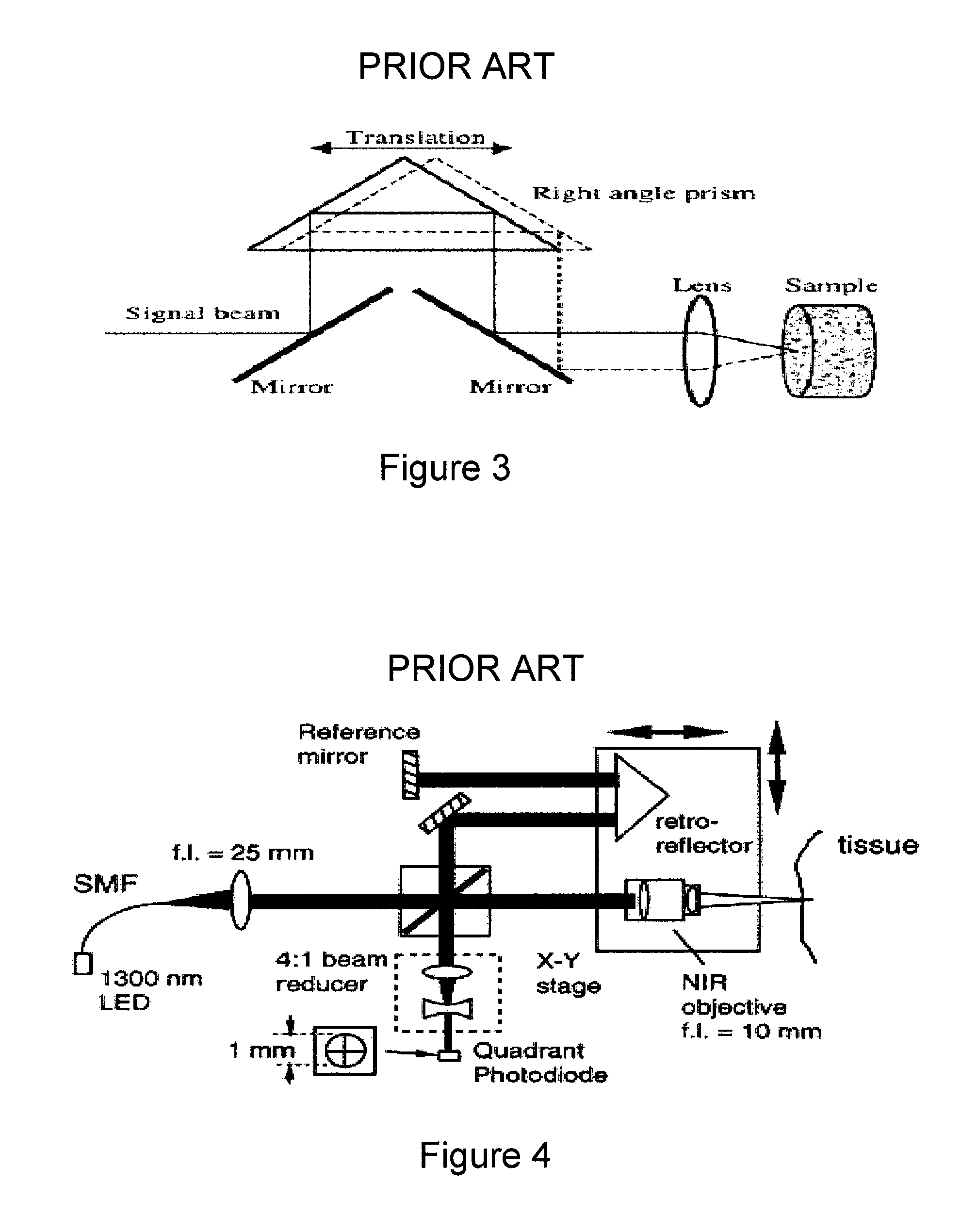Methods and systems for performing angle-resolved fourier-domain optical coherence tomography
a fourier-domain optical coherence and tomography technology, applied in the field of methods and systems for performing angle-resolved fourier-domain optical coherence tomography, can solve the problems of system generally not scaling appropriately to a large number of angles, difficult to discern subtle reflectance differences in tissue reflectance, and only one angular range centered at 180 degrees is collected. to achieve the effect of facilitating the production of data associated
- Summary
- Abstract
- Description
- Claims
- Application Information
AI Technical Summary
Benefits of technology
Problems solved by technology
Method used
Image
Examples
example
[0074]The exemplary embodiment of the system and method according to the present invention which can be used for reducing speckle was verified by the following experiment. Two-layer tissue phantoms were constructed from aqueous agar gel (0.5% agar by weight) and polymer microspheres of diameter 0.3 mm (Duke Scientific). The phantoms were contained in silicone isolators (Sigma). An initial scattering layer with an approximate depth of 2 mm was formed. A second scattering layer, designed to have a lower scattering coefficient than the first, was formed on top of the first and had an approximate depth of 450 mm. By analyzing the exponential signal attenuation with respect to depth, the total scattering coefficients were estimated to be 24 cm-1 and 12 cm-1 for the first and second layers, respectively.
[0075]The two-dimensional image generated from a single angular sample shows significant speckle, as shown in FIG. 11(a), in which the boundary between the two layers is not clearly visibl...
PUM
 Login to View More
Login to View More Abstract
Description
Claims
Application Information
 Login to View More
Login to View More - R&D
- Intellectual Property
- Life Sciences
- Materials
- Tech Scout
- Unparalleled Data Quality
- Higher Quality Content
- 60% Fewer Hallucinations
Browse by: Latest US Patents, China's latest patents, Technical Efficacy Thesaurus, Application Domain, Technology Topic, Popular Technical Reports.
© 2025 PatSnap. All rights reserved.Legal|Privacy policy|Modern Slavery Act Transparency Statement|Sitemap|About US| Contact US: help@patsnap.com



